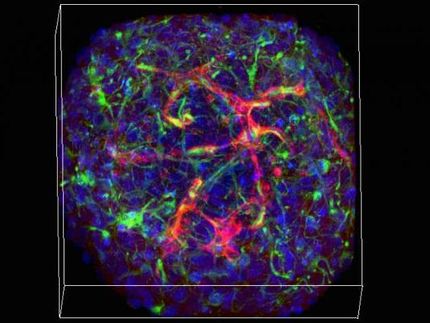Brain stroke kills neurons by lethal electrical waves
This stroke does not kill nerve cells by chemical toxicity, as previously believed, according to an international study with CSIC researchers
Advertisement
An international group of researchers in which Dr. Oscar Herreras, from the Spanish National Research Council (CSIC) participates, has shown that strokes do not kill neurons by chemical toxicity, as previously thought, but by lethal electrical waves. After the interruption of blood supply to the brain, the first event in the chain of events leading to the death of neurons is the appearance of a wave of electrical potential that circulates through the tissue, silencing the neurons in its path and causing them to lose their capacity to generate electricity and process information. This new analysis, published in Neurocritical Care, challenges the prevailing theory about how neurons die in cases of stroke, which gives prominence to chemical toxicity. These electrical waves may be a new therapeutic target to treat strokes more effectively.

Symbolic recreation of a stroke.
Pixabay
"Strokes are the second leading cause of death and the first cause of disability," says researcher Oscar Herreras, from the Cajal Institute (CSIC). "Neurons are the cells most sensitive to lack of oxygen and glucose, and they die after a few minutes without a continuous supply from the bloodstream," he explains.
"Despite having attracted one of the greatest efforts in both clinical and experimental research, the numerous findings obtained in the laboratory on the mechanism of stroke have not been translated to the clinic," explains Herreras. Today there is no evidence-based strategy for treating this very large group of patients admitted to the ICU, generally with a very poor prognosis.
More than 200 clinical trials to evaluate drugs that have been shown to be potentially useful in laboratory models of stroke, or traumatic brain injury (TBI), have been unsuccessful in patients, which has the scientific community perplexed and the clinical community frustrated, according to Herreras.
The group of researchers who published the analysis concluded that the findings on which the clinical trials were based were not decisive, and had overlooked previous discoveries that were. "It has been three decades of experimentation dedicated to proving over and over again that neurons die when they are subjected to a toxic environment due to excess glutamate (excitotoxic theory), a neurotransmitter molecule that spills out of cells in large quantities in the absence of oxygen and is lethal to their neighbors," says Herreras. "But this is neither the first nor the main event that occurs after a stroke."
"It has been known since the middle of the last century that, after the interruption of blood supply to the brain, the first event in the chain of events leading to the death of neurons is the appearance of an electrical potential wave," Herreras explains. This electrical wave also appears in the aura phase of migraine, but in this case it barely lasts a minute and the nervous tissue recovers completely. Not so when there is a lack of oxygen and glucose, which leads to a massive influx of water into the interior, from which the neurons cannot recover.
Goal: stop lethal electrical waves
According to Herreras, who has worked for more than 20 years on the biophysics of these waves, the problem may have been that researchers and pharmaceutical companies did not know how to use or modulate these electrical waves to prevent damage and have focused on one of their chemical consequences, assuming that they are an intermediate step in which the lethal drift could be stopped. "But once the waves are initiated, many parallel processes are triggered that lead to death, and tackling glutamate toxicity alone is not enough. It is necessary to stop the waves that trigger everything," says Dr. Herreras.
Note: This article has been translated using a computer system without human intervention. LUMITOS offers these automatic translations to present a wider range of current news. Since this article has been translated with automatic translation, it is possible that it contains errors in vocabulary, syntax or grammar. The original article in Spanish can be found here.




















































